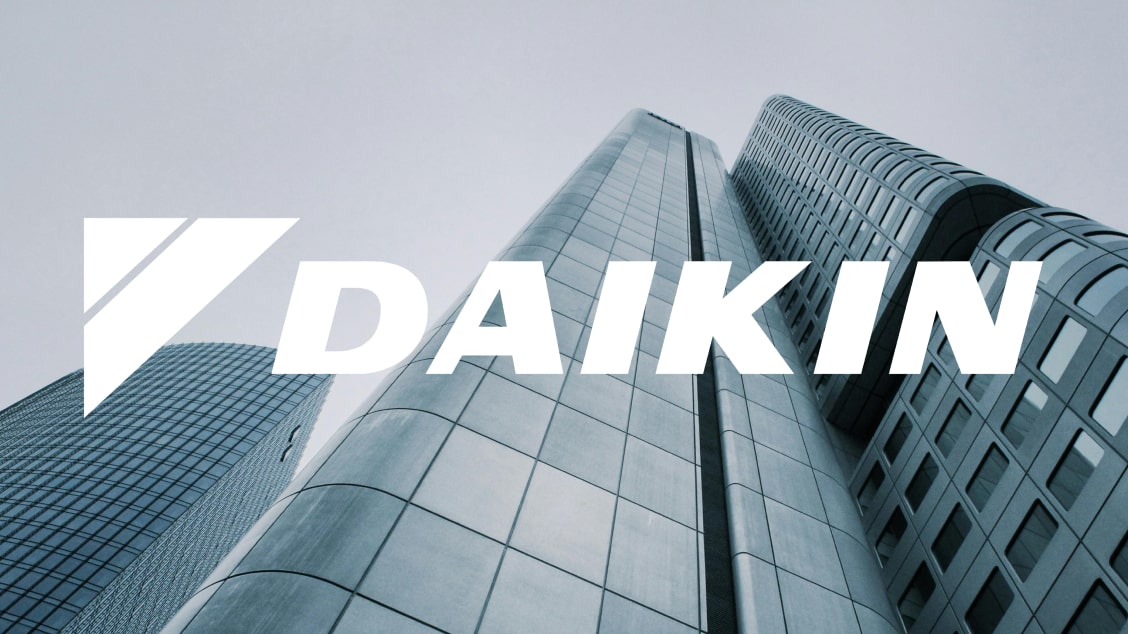
Matteo Dall’Ombra of Daikin UK and Ryan Philp – Daikin’s New Zealand sustainability lead – pressed the importance of accurately calculating and disclosing the sustainability of the products and materials they use within their solutions.
Beyond concrete and into MEP
Hear about the importance of EPDs within Daikin, and how they are responding to changing global trends.
“As access to accurate EPD data grows, buildings can even become 'material banks' for future constructions – moving us closer towards a circular economy. They not only foster transparency – they also drive innovation.”
– Ryan Philp, Sustainability Lead at Daikin New Zealand
Global product carbon footprint trends in the mechanical, electrical and plumbing (MEP) sector
Daikin is in a period of change, responding to trends across the globe which are influencing the MEP sector, and making increased sustainability more important than ever. With many countries now signed onto international agreements, like the Paris Agreement, domestic legislation is increasingly supporting efforts to meet commitments.
Carbon pricing is growing, as is investment in renewables – with China and India emerging as global leaders. China alone holds over 40% of global renewable energy capacity.
There is also increasing world-wide focus on climate resilience, green finance, and energy efficiency – with the final point being particularly true within the building sector. Green building certifications, including Green Star, NABERS and LEED, are also helping to promote sustainable construction practices.
Specifically within New Zealand, recent policies have focused on tackling embodied carbon. These include the IEA Net Zero 2050 Roadmap, the 2020 Building for Climate Change Program and the Carbon Neutral Government Program.
“All of these policies are coming together to drive targets on embodied carbon and reduction across the supply chain,”
- Ryan Philp, Daikin New Zealand
Daikin's product carbon footprint goals for the future as an MEP manufacturer
In their move toward a more sustainable future for the organization, Daikin is focused on absolute credibility, as well as committing to providing more MEP-specific market data.
The manufacturing giant has provided TM65 information for new products over the last few years, but recently took a significant step – releasing its first EPD certification.
“This is a major milestone for us. It represents the first type of certificate for this class of products in the UK market. And it is a major shift – because of course, as you know, EPDs are independently certified documents.”
- Matteo Dall Ombra, Daikin UK
As they head into the future, Daikin UK will increase the products for which EPDs are available, with the goal of eventually covering the whole product range for all new products as standard, and customers will receive these as seamlessly as they currently receive an installation or service manual. This commitment is being taken to truly demonstrate that the manufacturer is taking significant steps to becoming more sustainable and lowering their carbon emissions.
The benefits of EPDs for mechanical, electrical and plumbing products
Environmental product declarations (EPDs) provide a wealth of benefits for sustainability-focused manufacturers in the sector.
- Helping projects achieve green building accreditations.
- Identifying cost-savings, efficiency gains, and carbon hotspots, and strengthening overall benchmarking across sectors.
- Improving communication with customers and other stakeholders – growing transparency and tackling greenwash.
“As access to accurate EPD data grows, buildings can even become “material banks” for future constructions – moving us closer towards a circular economy. They not only foster transparency – they also drive innovation.”
- Ryan Philp, Daikin NZ
Requirements for successful EPDs and product carbon footprint transparency
As the use of EPDs increases in the MEP sector, and more manufacturers start the process of implementing them, the Daikin journey highlights the importance of understanding how they work, and having access to the right tools and training.
- Understand what an EPD is, and isn’t
An environmental product declaration (EPD) is a factual declaration about the carbon within a product or material. It highlights the opportunities for making a product more sustainable. - Ensure your EPD covers the areas you need
Areas like toxicity, biodiversity and social impacts are often excluded – work with a credible EPD solution provider and ensure your EPD covers everything you need. - One size doesn’t fit all
Not all EPDs are the same. It is important to recognise this before products with different EPDs are compared.
The One Click LCA MEP Carbon Tool
Equipment from the MEP sector can create anything from 15 to 50% of a building’s embodied carbon, and the MEP Carbon Tool is the simple, MEP-only platform helping organizations in the sector to drive their sustainability goals forward.
“Historically, it has often been left out, because of the lack of data, but if it’s 50% of the entire building, it’s clearly not the item to leave out.”
- Johanna Jarvinen, One Click LCA
How does the MEP Carbon Tool help?
-
-
Differentiate your business
MEP climate impact expertise positions you as a sustainable design leader. Be the leader who helps your clients achieve their climate goals.
- Offer new MEP services
Target MEP carbon in data centers, offices, cooled warehouses, and retrofits. Leverage new opportunities to provide decarbonization and specification services.
- Win low carbon jobs
Reduce cost and carbon by performing simulations considering whole-life scenarios, including transport, maintenance, service life, and more. Consider carbon pricing during procurement and specification.
About One Click LCA
One Click LCA works with manufacturers across all construction-related industries to create fast, easy, scaleable EPDs and meet local and global compliance requirements. The range of One Click LCA EPD tools help sustainability professionals deliver EPDs and carbon footprints, to market and deliver sustainable products.
-
Carbon Experts Newsletter
Industry news & insights — straight to your inbox
Want to learn more?
Muhammad Ali Saleem • Mar 15 2025
Melina Zacharia • Mar 05 2024
Melina Zacharia • Jun 11 2024
Laura Drury • Nov 26 2024
